Abstract
In Experiment 1 six monkeys were tested with discriminative relations that were backward relative to their training in a 0-second conditional (“symbolic”) matching procedure. Although there was some indication of backward associations, the evidence was generally weak, and statistical evaluations did not reach conventional significance levels. Unlike children, who show backward associations to the point of symmetry, monkeys and pigeons display at best only weak and transient backward associations. In Experiment 2 associative transitivity was assessed across two sets of conditional matching tasks. All four monkeys tested demonstrated strong transitivity. In contrast, in Experiment 3 there was no evidence of transitivity in three pigeons tested under conditions closely comparable to those of Experiment 2. These results may identify some key features of interspecies differences and contribute to analyses of serial learning in animals.
Keywords: symmetry, transitivity, conditional relations, key press, key peck, monkeys, pigeons
Full text
PDF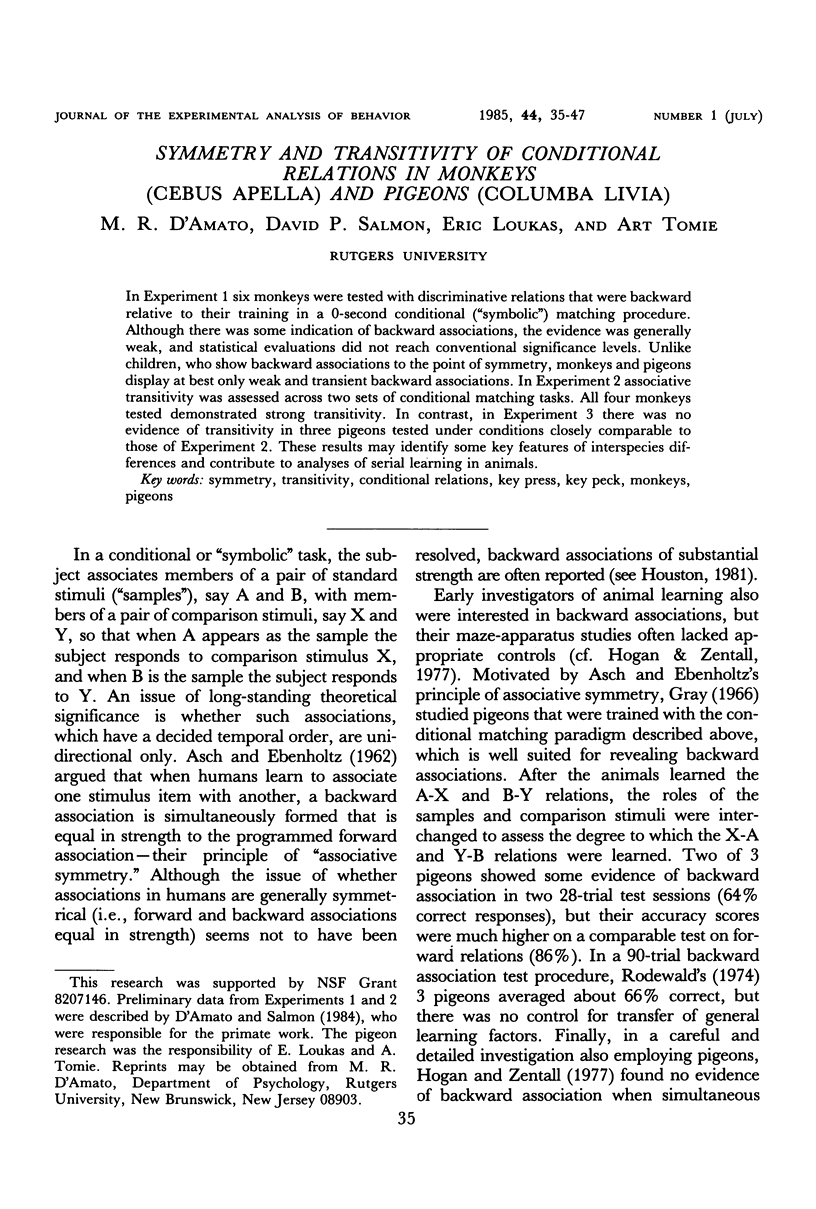
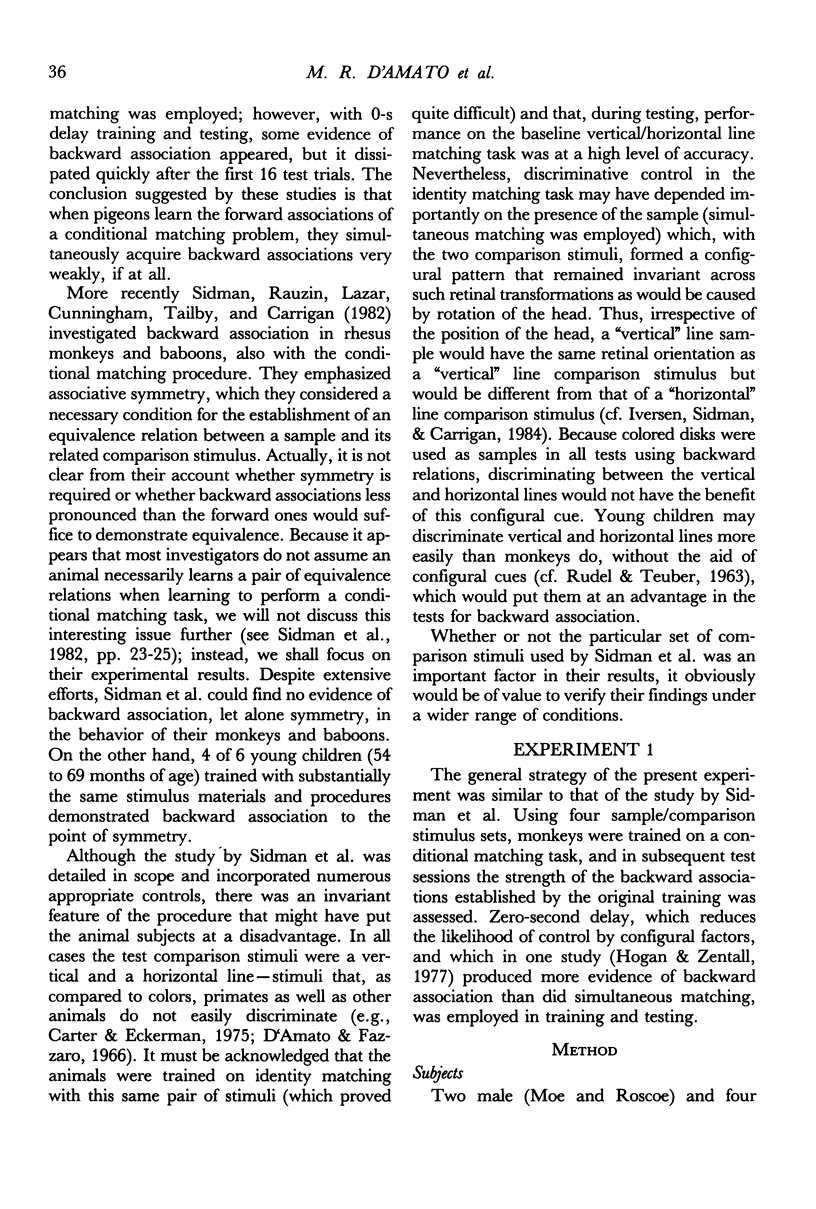
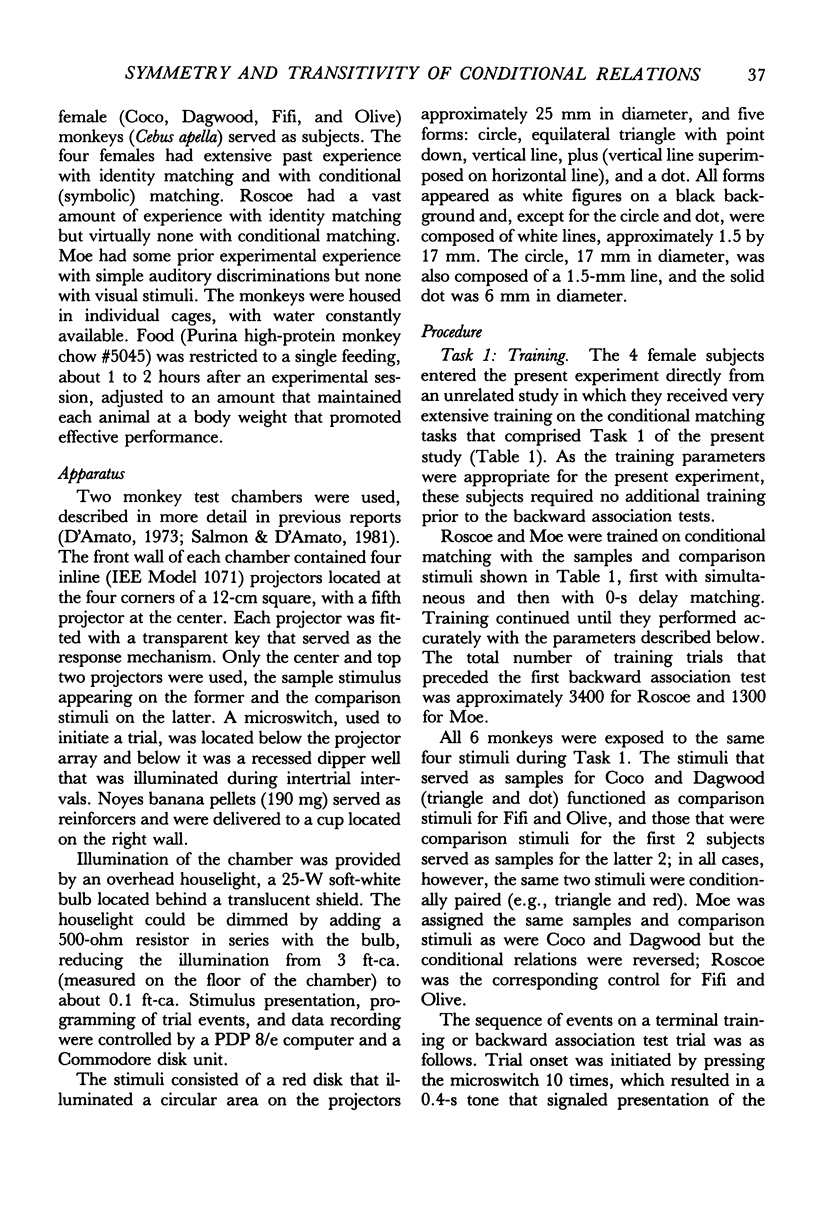
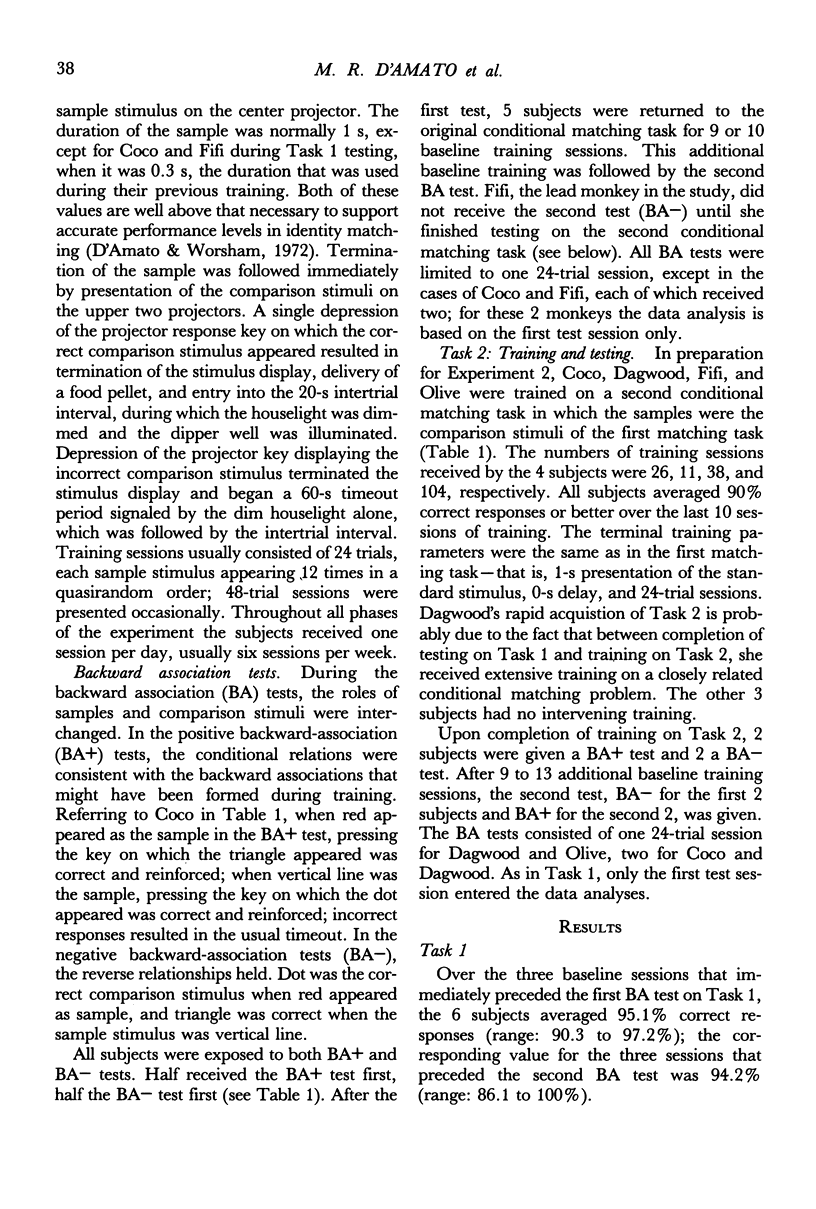
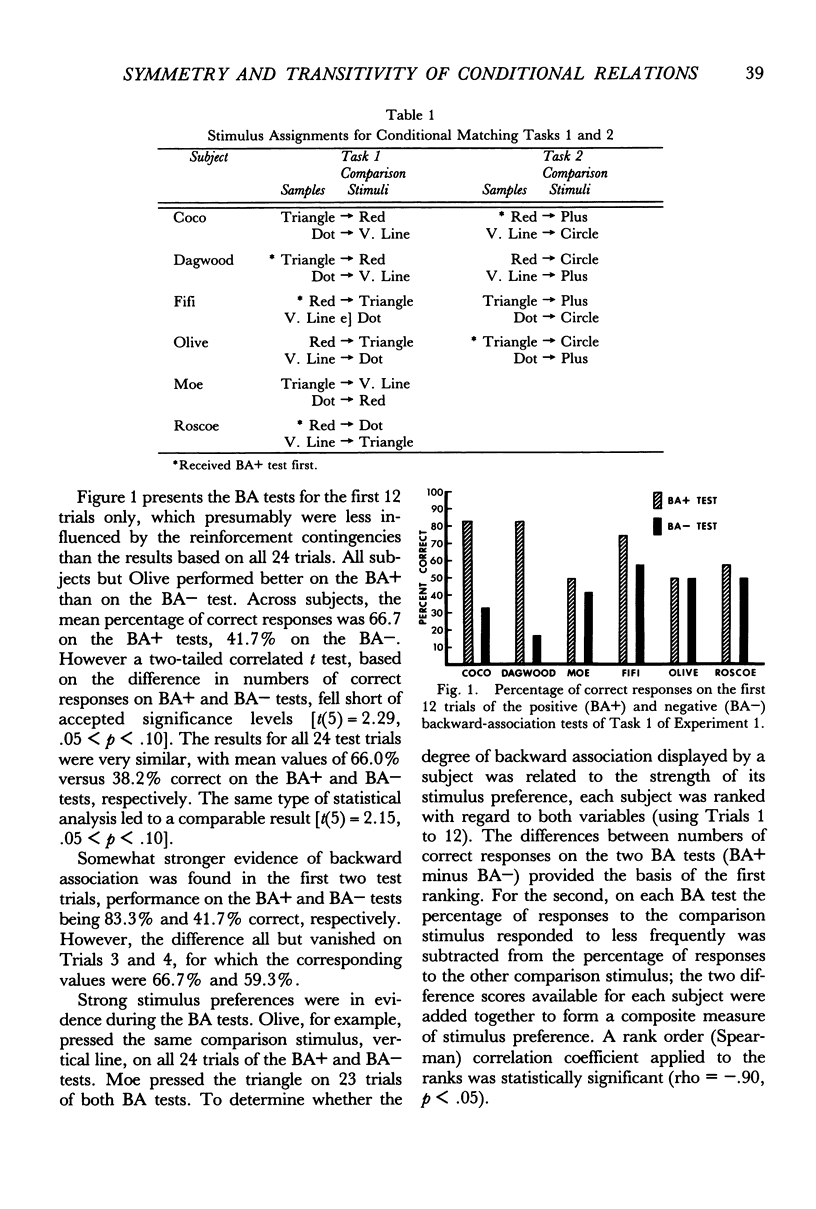
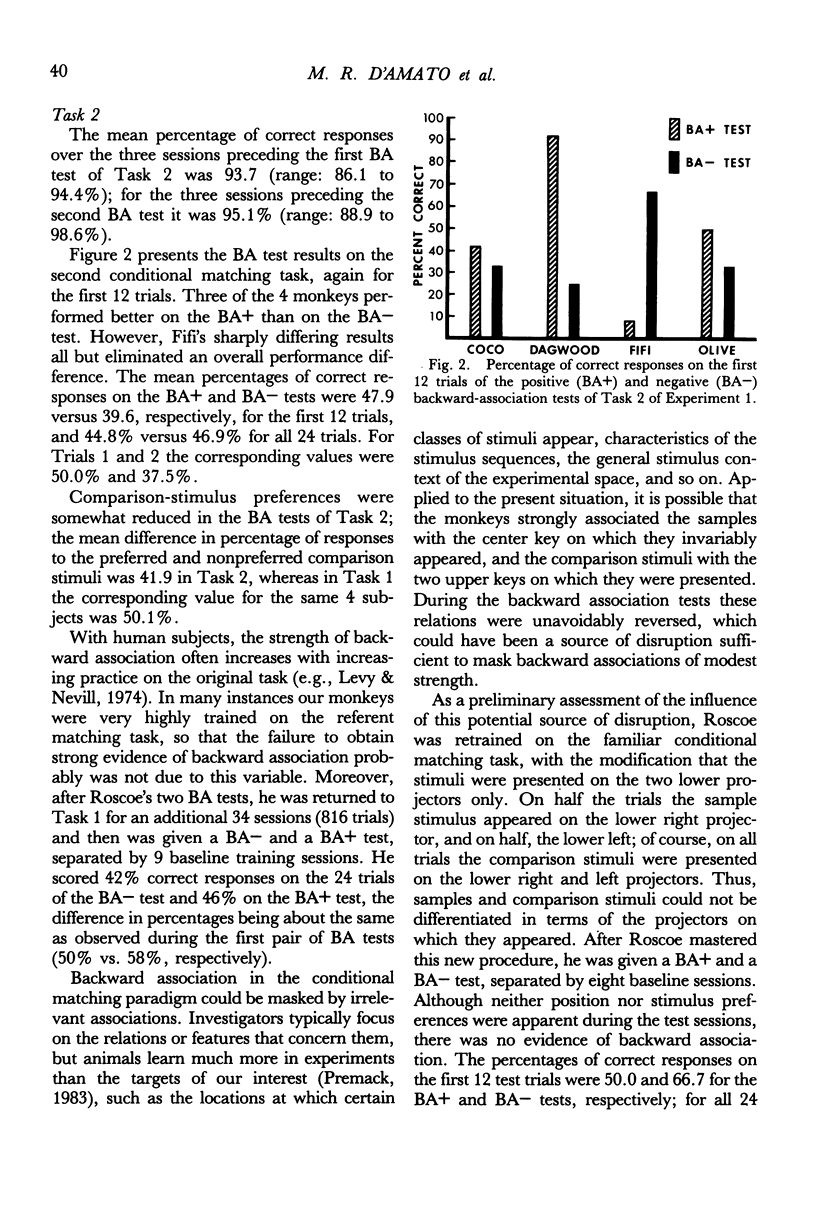
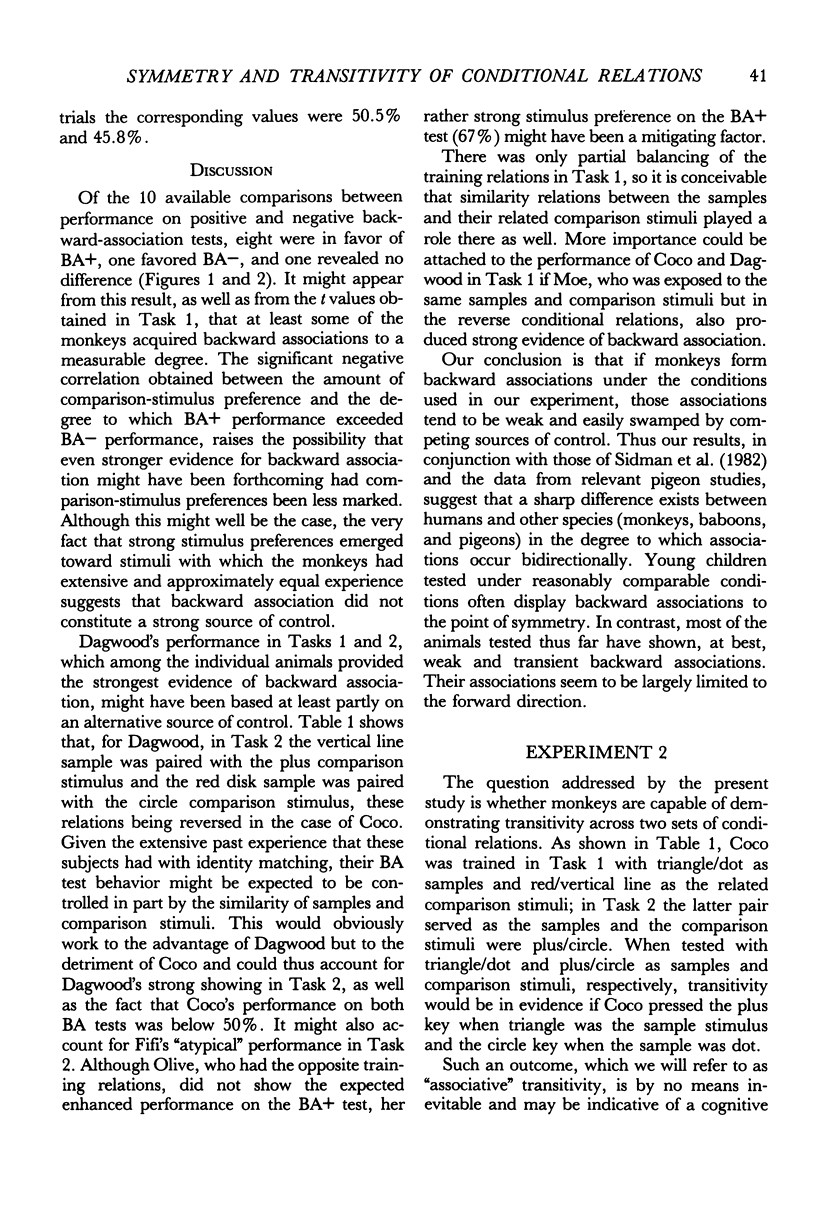
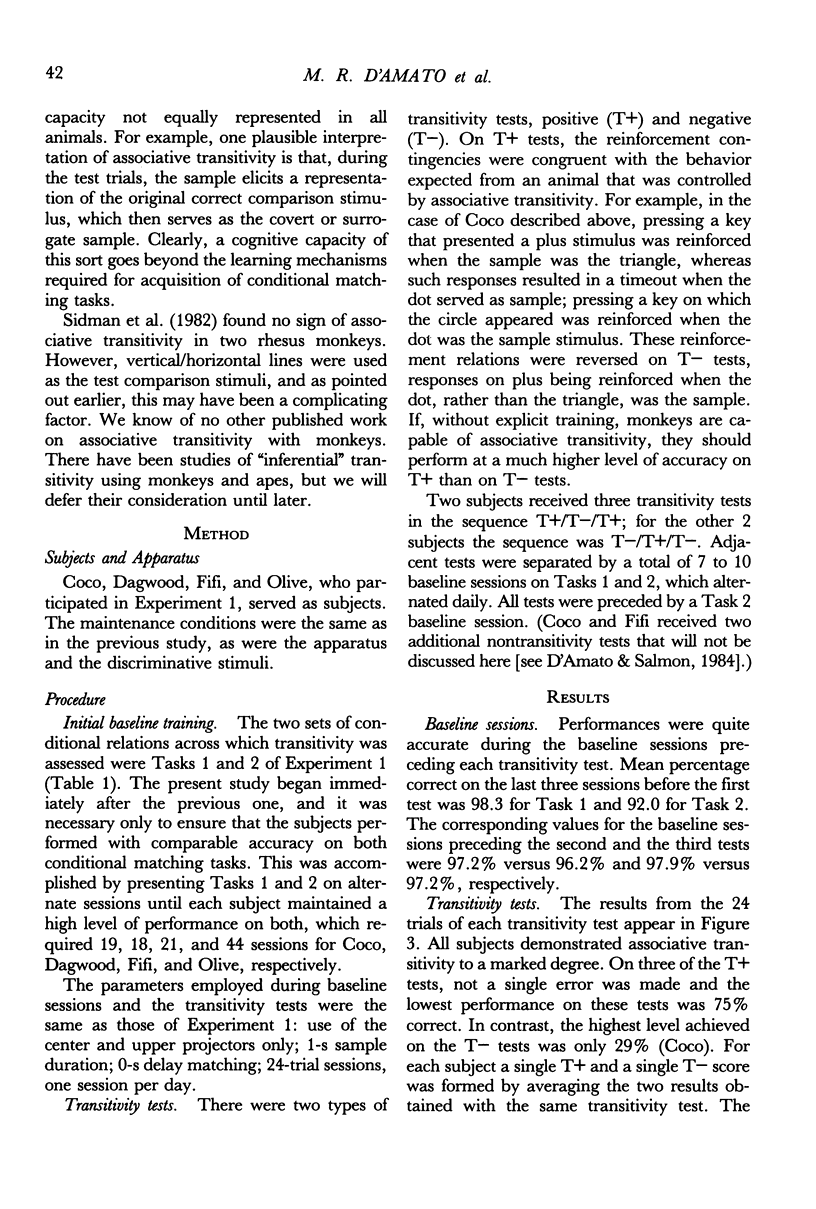

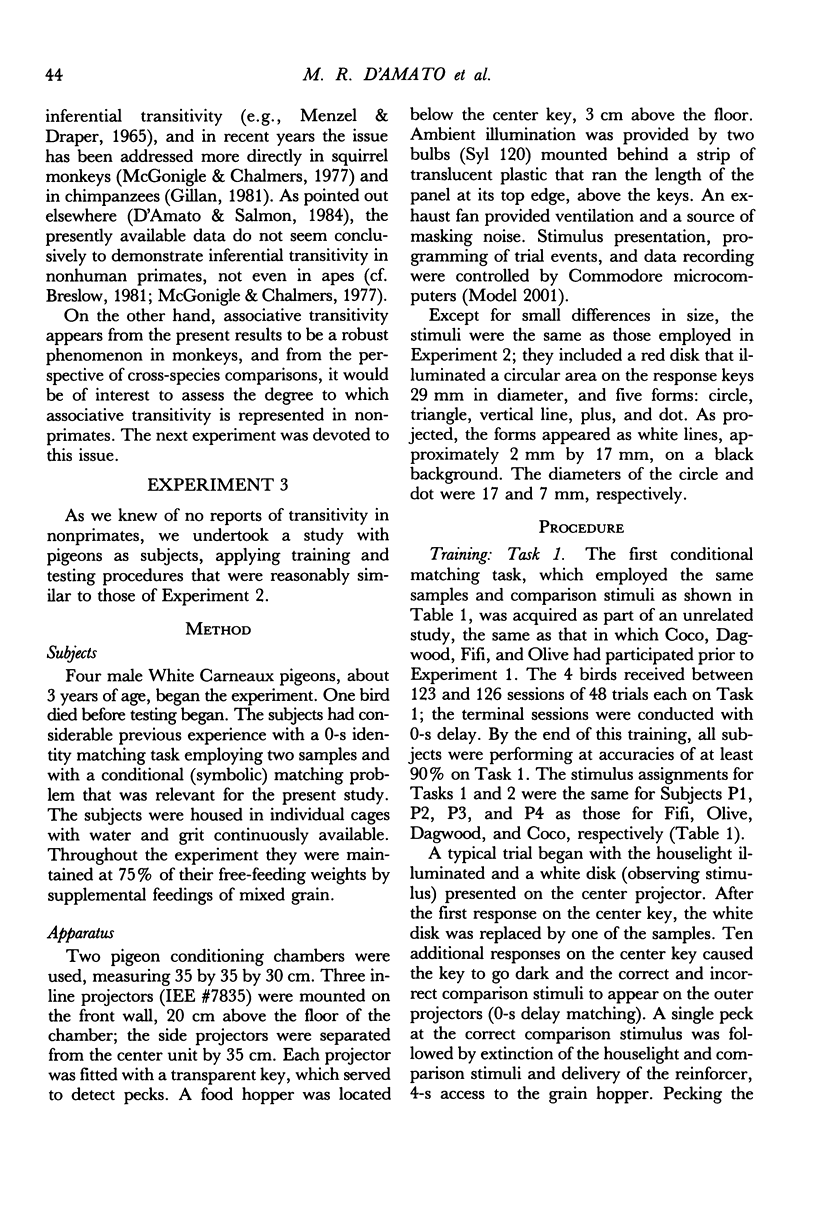
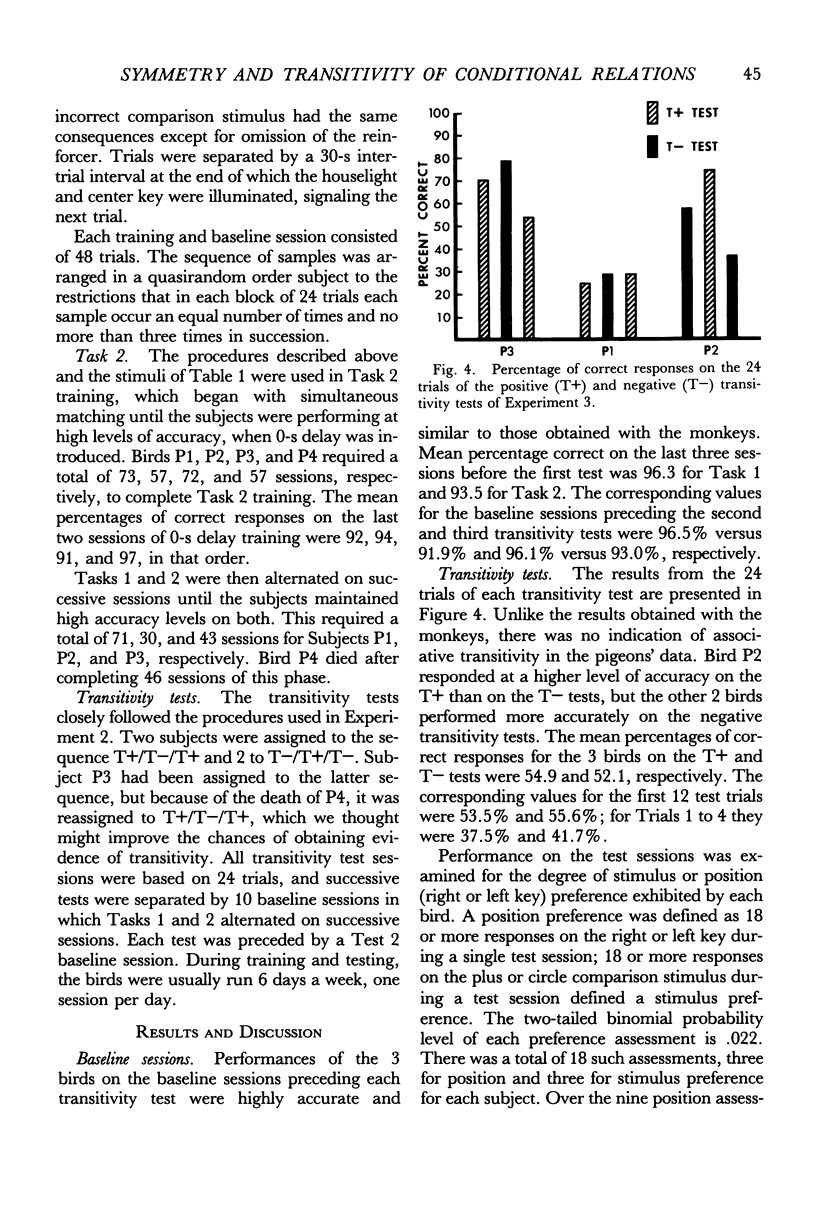
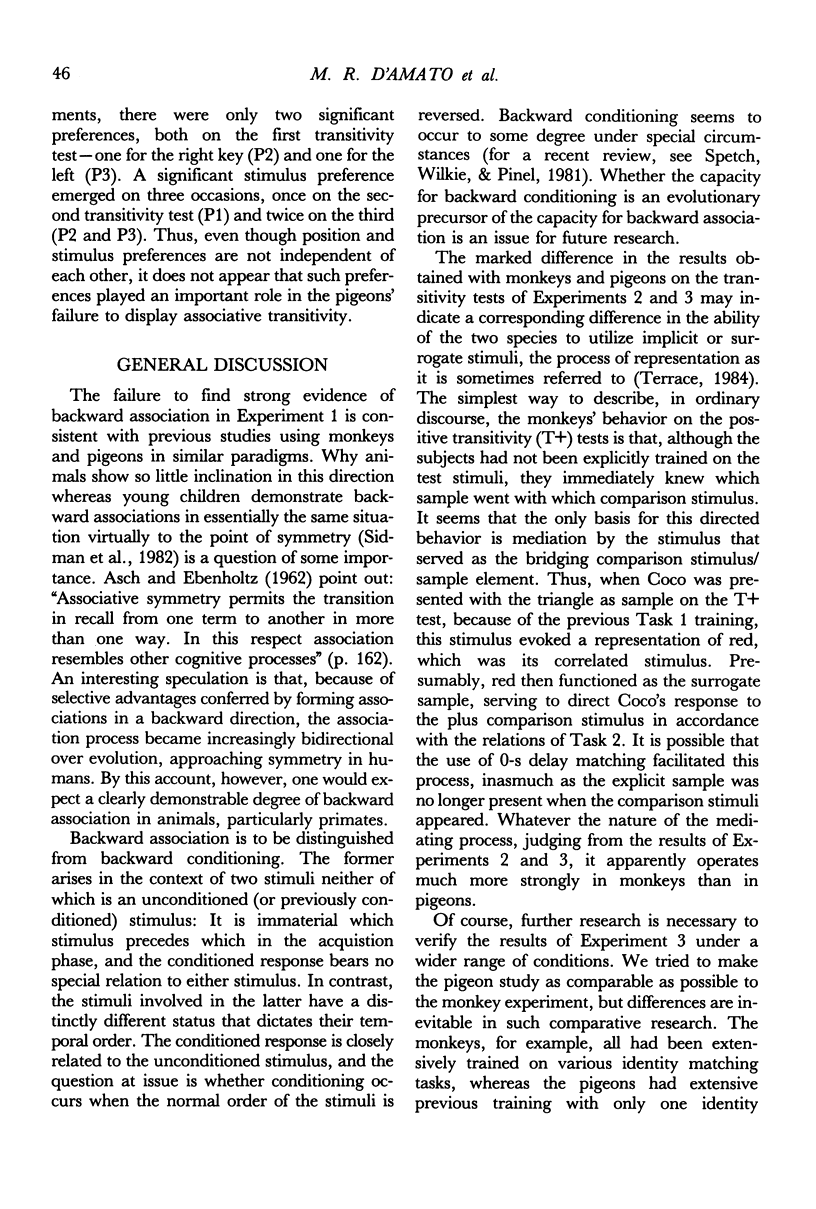
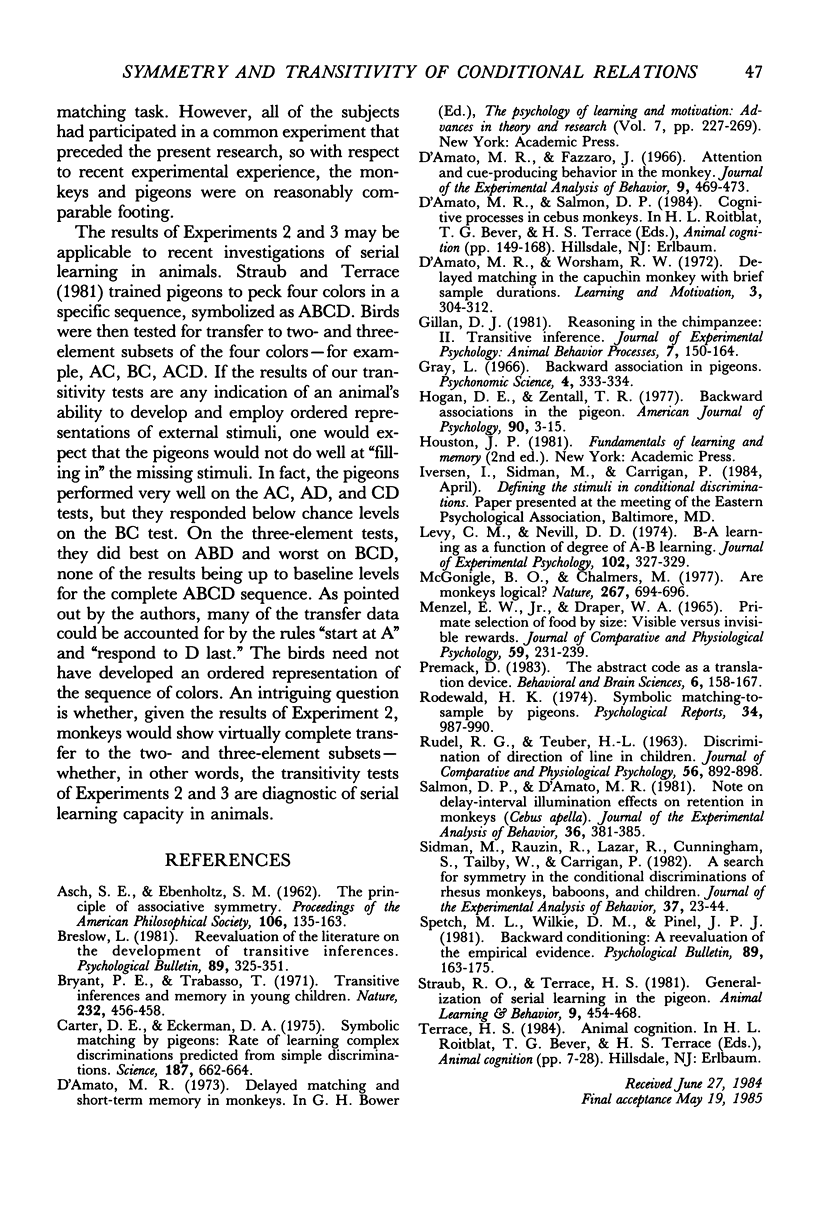
Selected References
These references are in PubMed. This may not be the complete list of references from this article.
- Bryant P. E., Trabasso T. Transitive inferences and memory in young children. Nature. 1971 Aug 13;232(5311):456–458. doi: 10.1038/232456a0. [DOI] [PubMed] [Google Scholar]
- Carter D. E., Eckerman D. A. Symbolic matching by pigeons: rate of learning complex discriminations predicted from simple discriminations. Science. 1975 Feb 21;187(4177):662–664. doi: 10.1126/science.1114318. [DOI] [PubMed] [Google Scholar]
- D'Amato M. R., Fazzaro J. Attention and cue-producing behavior in the monkey. J Exp Anal Behav. 1966 Jul;9(4):469–473. doi: 10.1901/jeab.1966.9-469. [DOI] [PMC free article] [PubMed] [Google Scholar]
- MENZEL E. W., Jr, DRAPER W. A. PRIMATE SELECTION OF FOOD BY SIZE: VISIBLE VERSUS INVISIBLE REWARDS. J Comp Physiol Psychol. 1965 Apr;59:231–239. doi: 10.1037/h0021833. [DOI] [PubMed] [Google Scholar]
- McGonigle B. O., Chalmers M. Are monkeys logical? Nature. 1977 Jun 23;267(5613):694–696. doi: 10.1038/267694a0. [DOI] [PubMed] [Google Scholar]
- RUDEL R. G., TEUBER H. L. DISCRIMINATION OF DIRECTION OF LINE IN CHILDREN. J Comp Physiol Psychol. 1963 Oct;56:892–898. doi: 10.1037/h0046592. [DOI] [PubMed] [Google Scholar]
- Salmon D. P., D'Amato M. R. Note on delay-interval illumination effects on retention in monkeys (Cebus apella). J Exp Anal Behav. 1981 Nov;36(3):381–385. doi: 10.1901/jeab.1981.36-381. [DOI] [PMC free article] [PubMed] [Google Scholar]
- Sidman M., Rauzin R., Lazar R., Cunningham S., Tailby W., Carrigan P. A search for symmetry in the conditional discriminations of rhesus monkeys, baboons, and children. J Exp Anal Behav. 1982 Jan;37(1):23–44. doi: 10.1901/jeab.1982.37-23. [DOI] [PMC free article] [PubMed] [Google Scholar]
- Spetch M. L., Wilkie D. M., Pinel J. P. Backward conditioning: a reevaluation of the empirical evidence. Psychol Bull. 1981 Jan;89(1):163–175. [PubMed] [Google Scholar]


